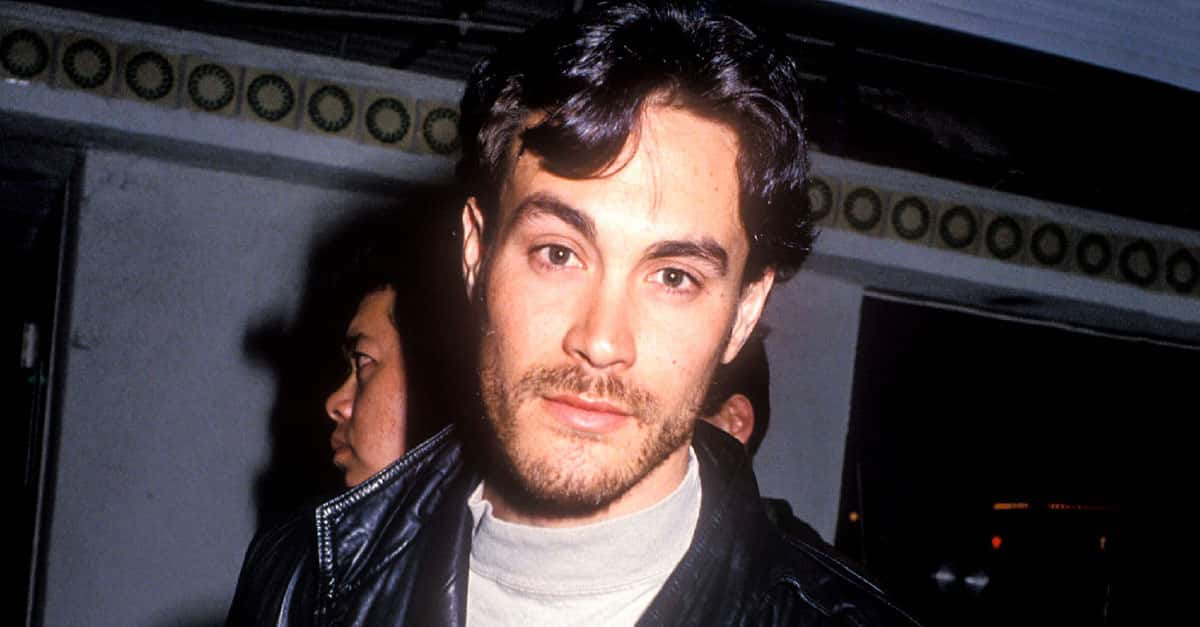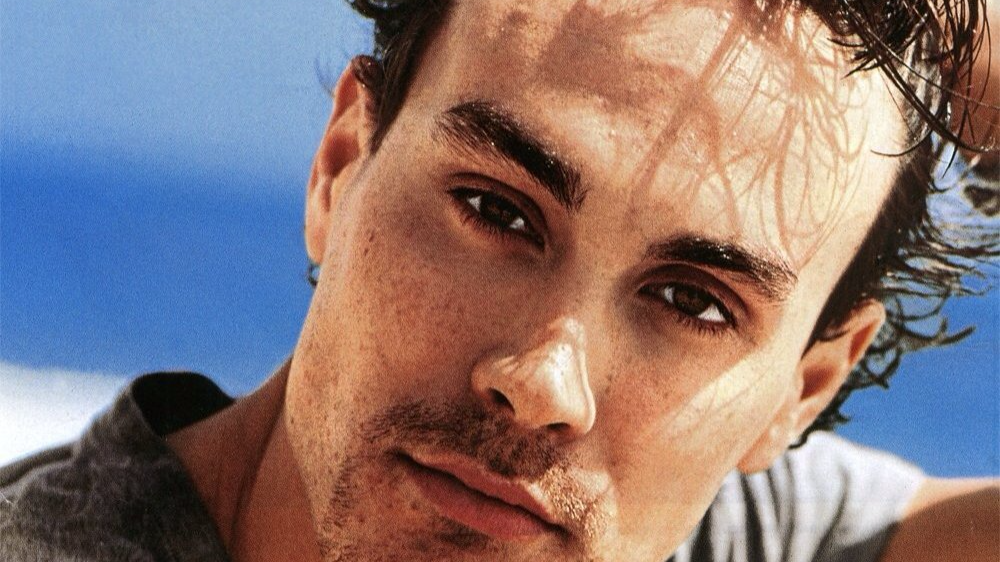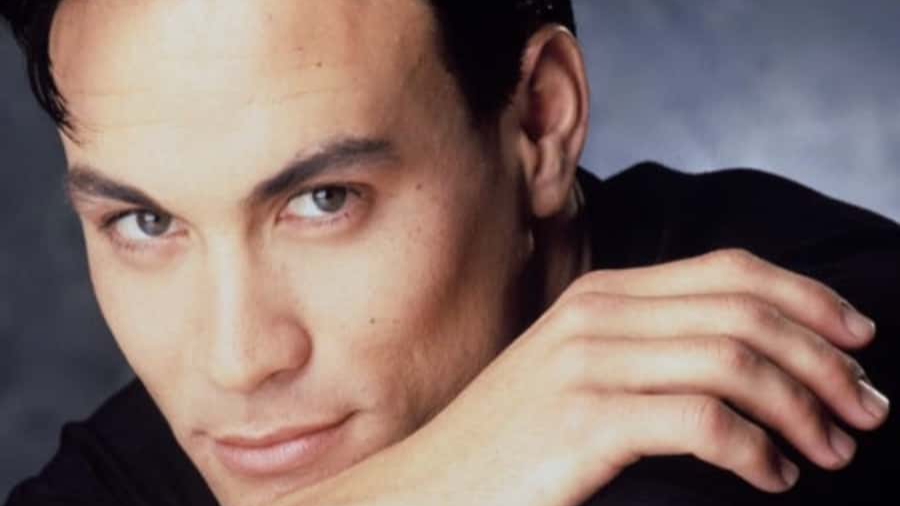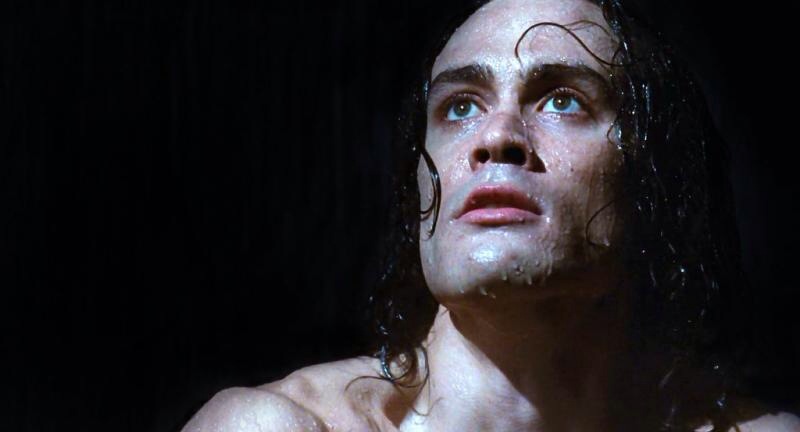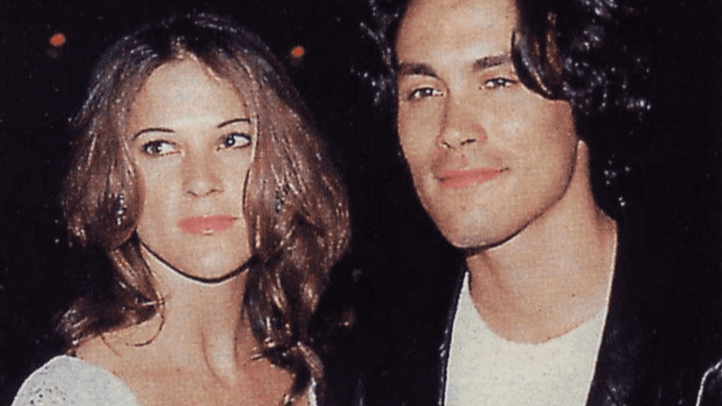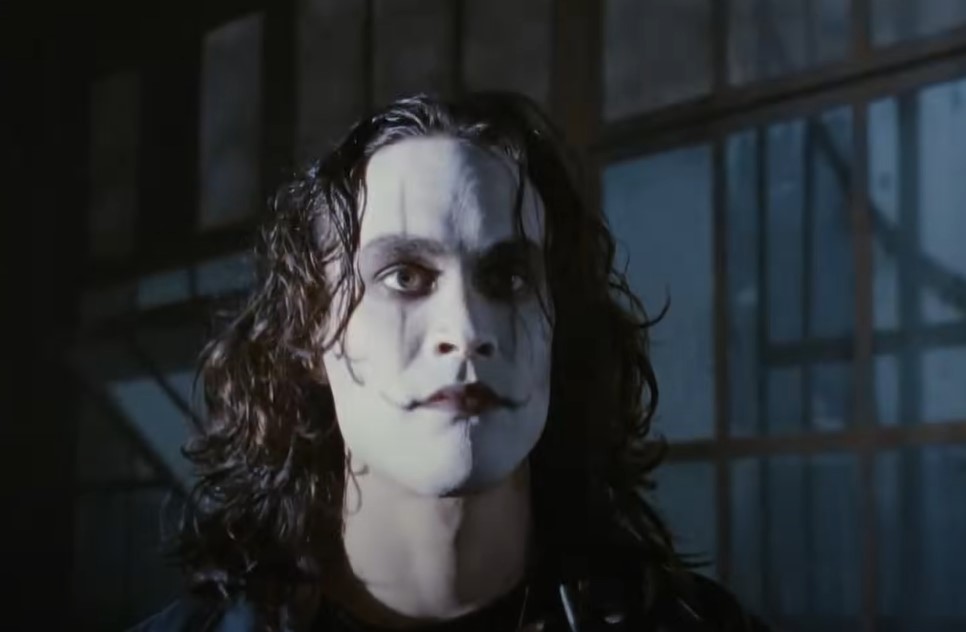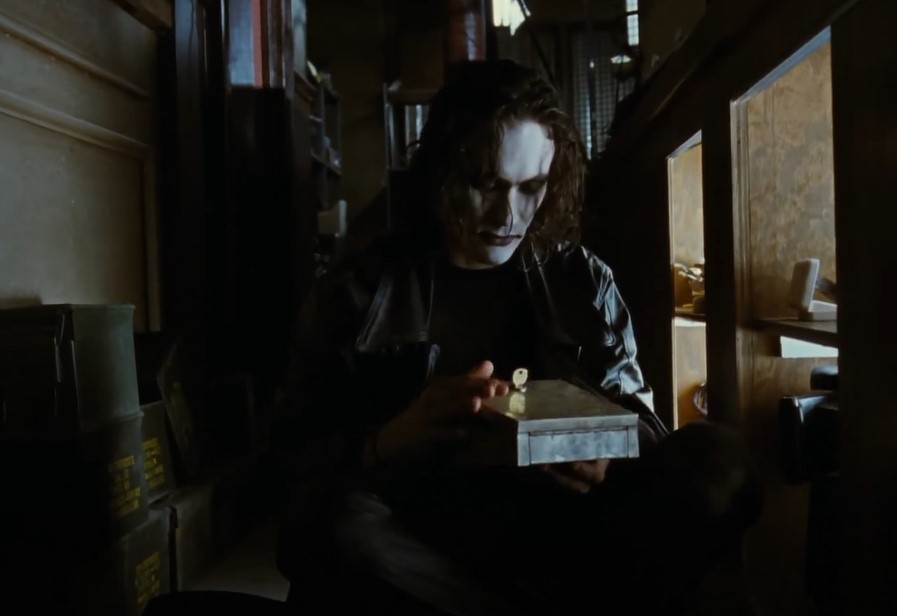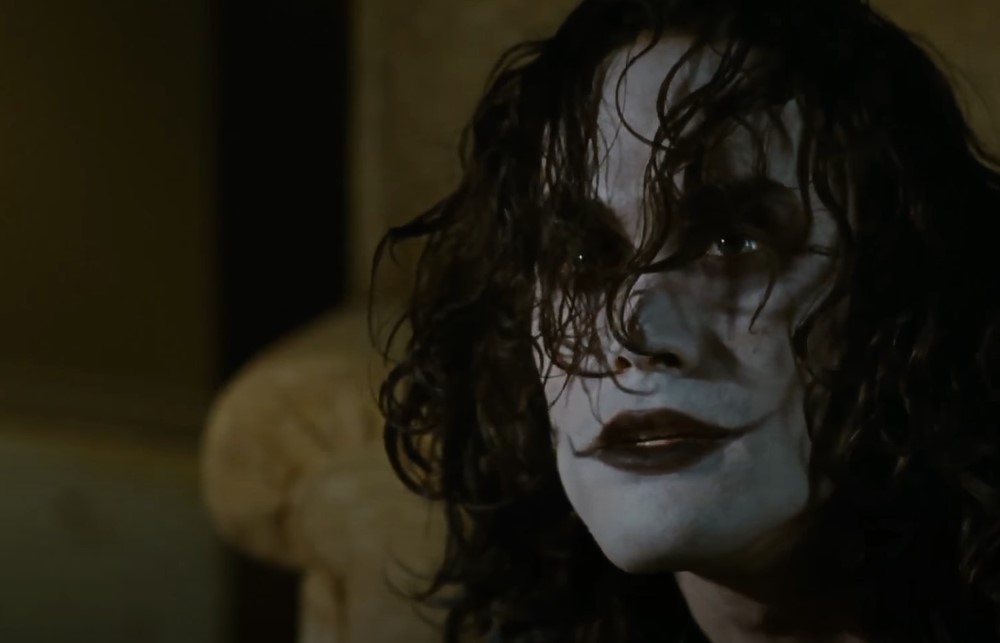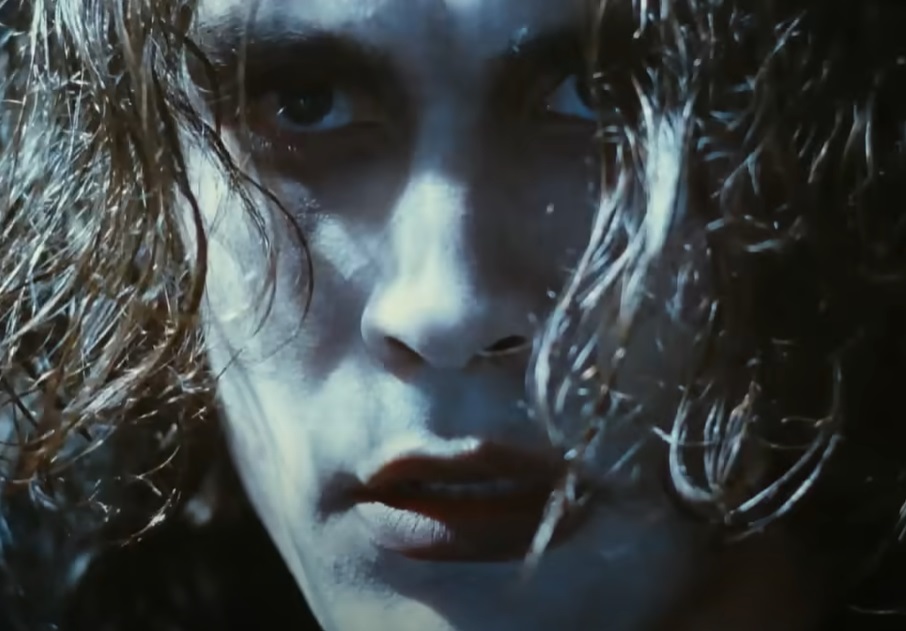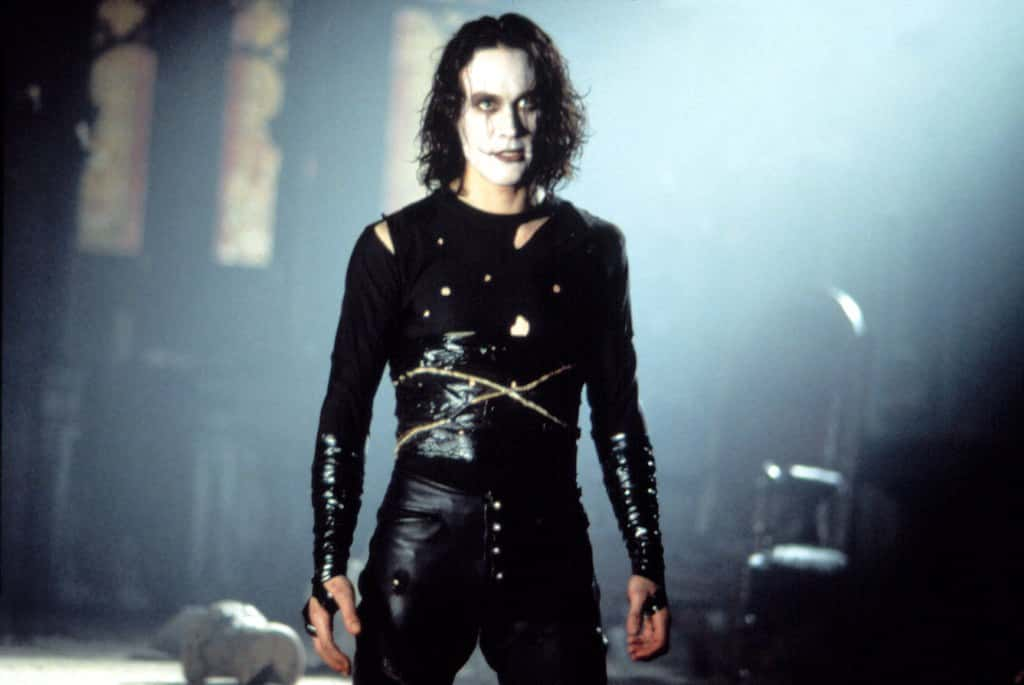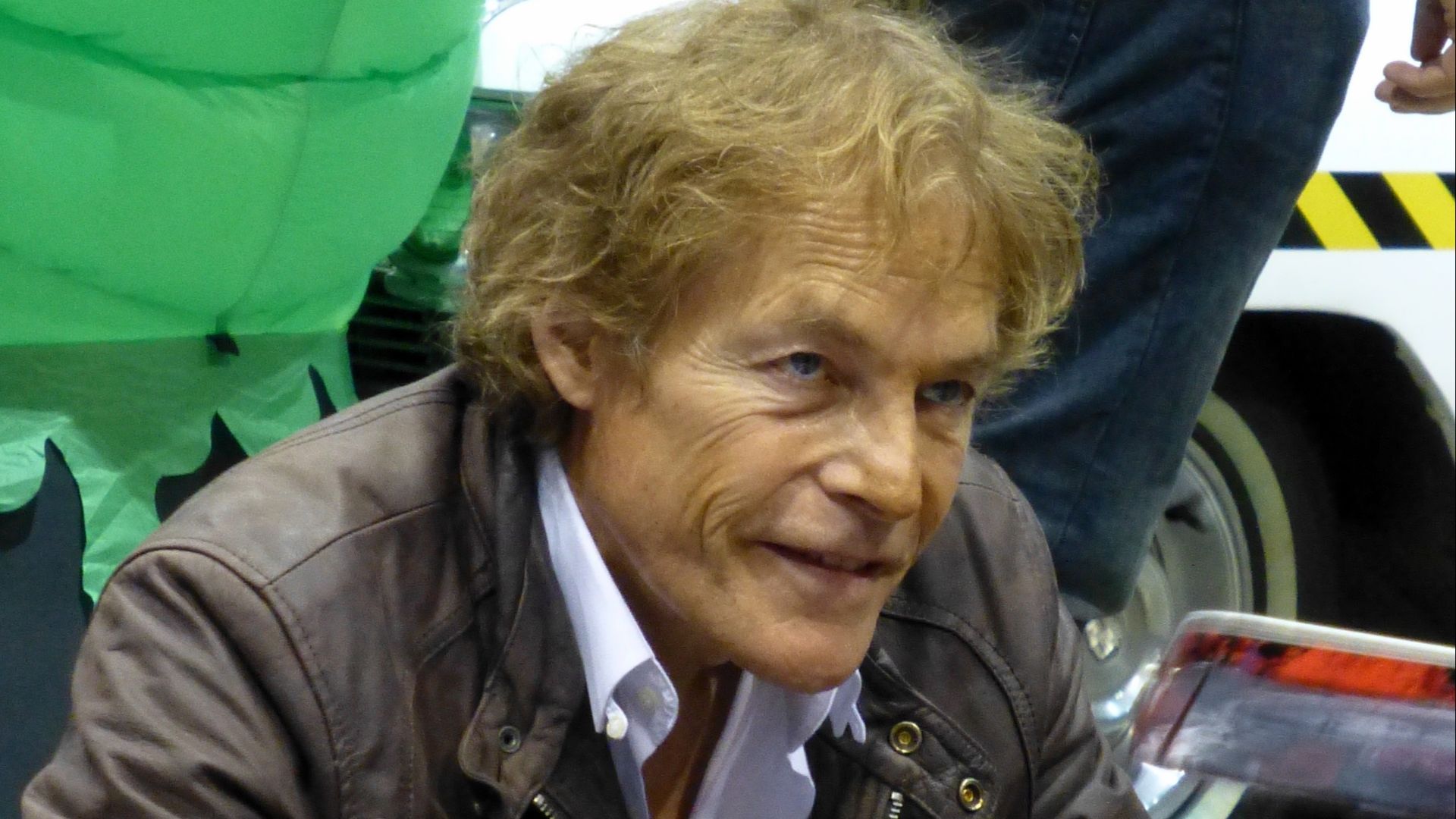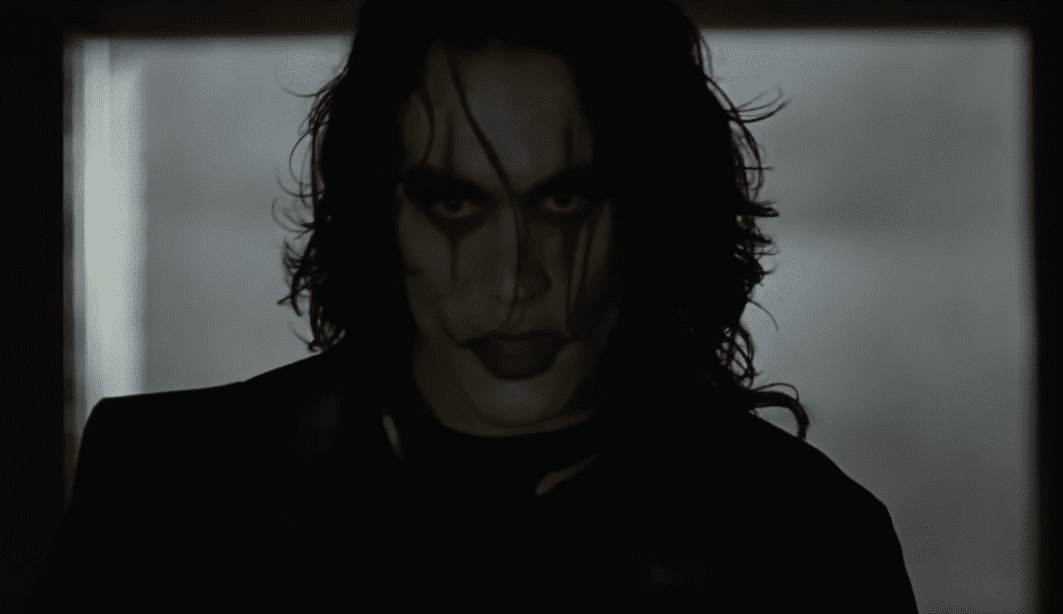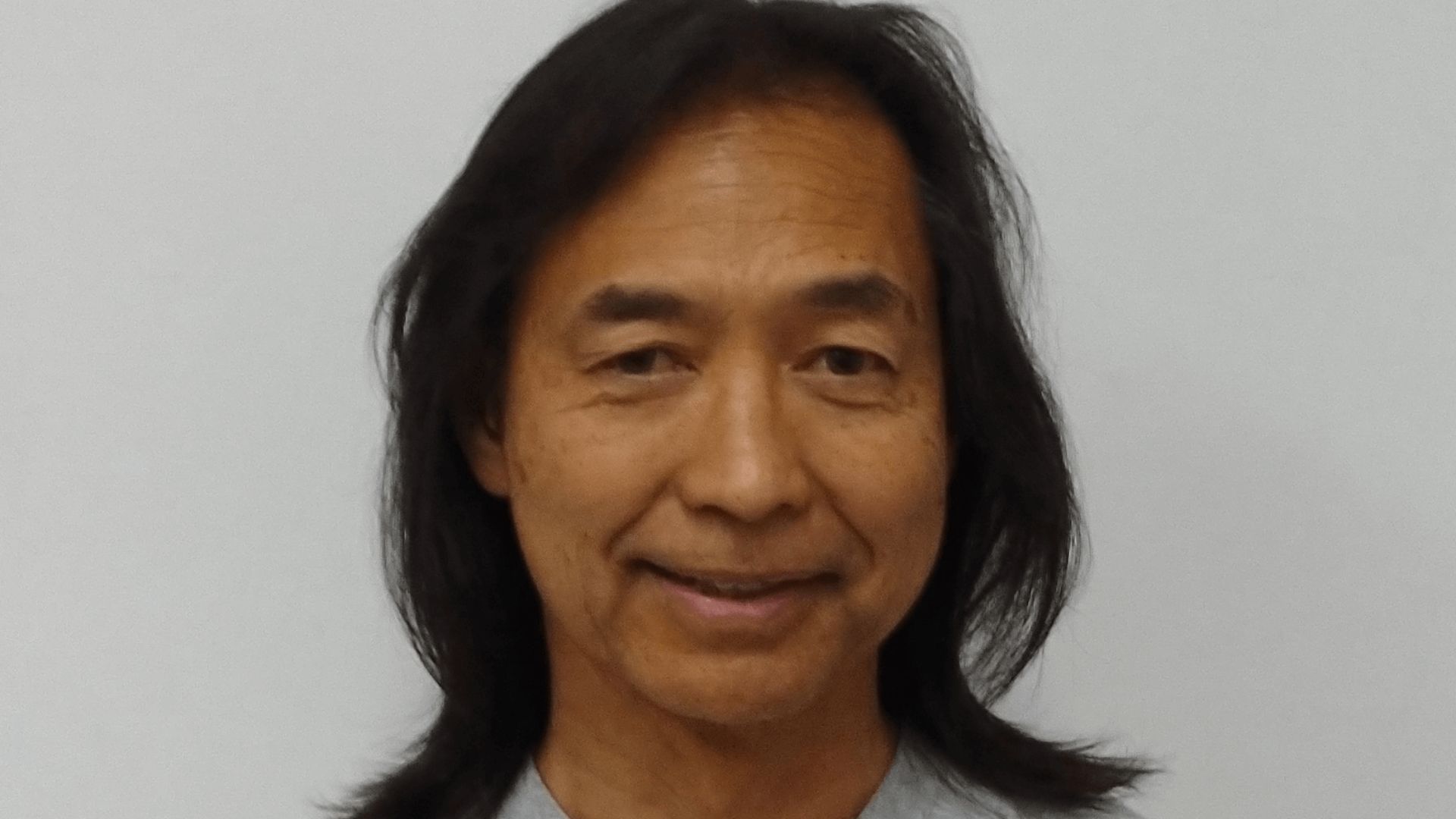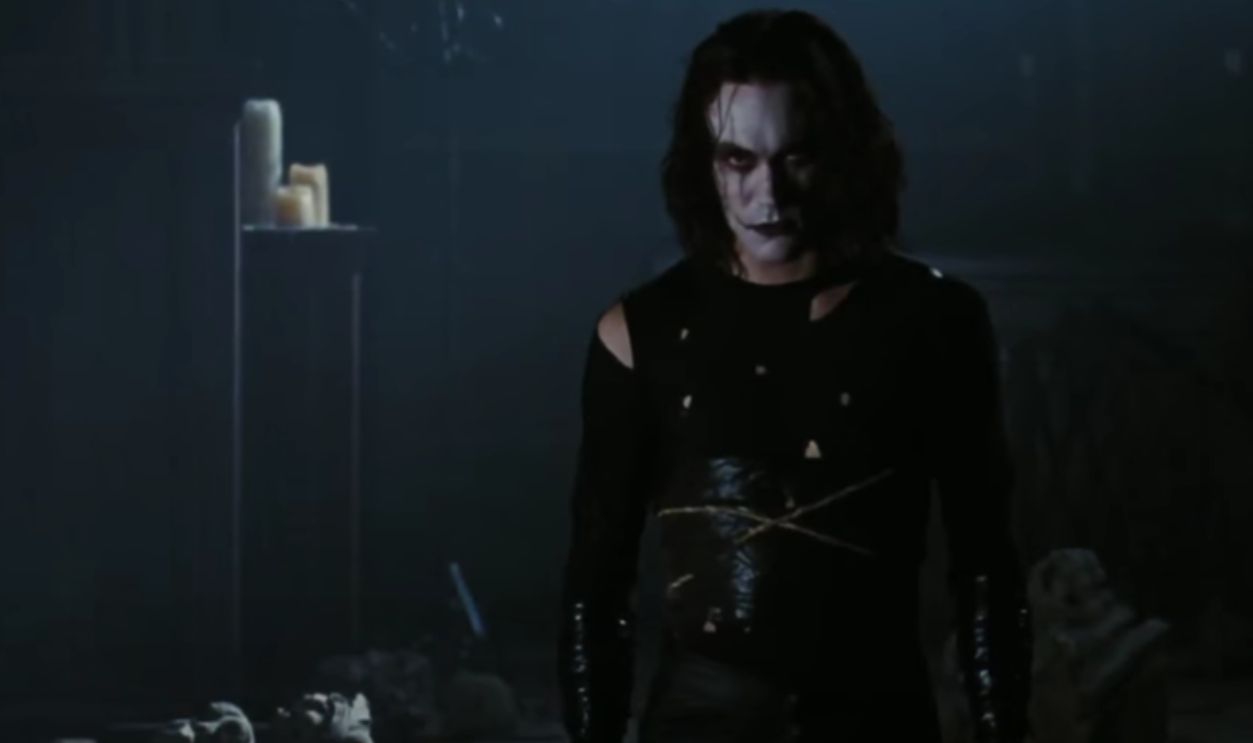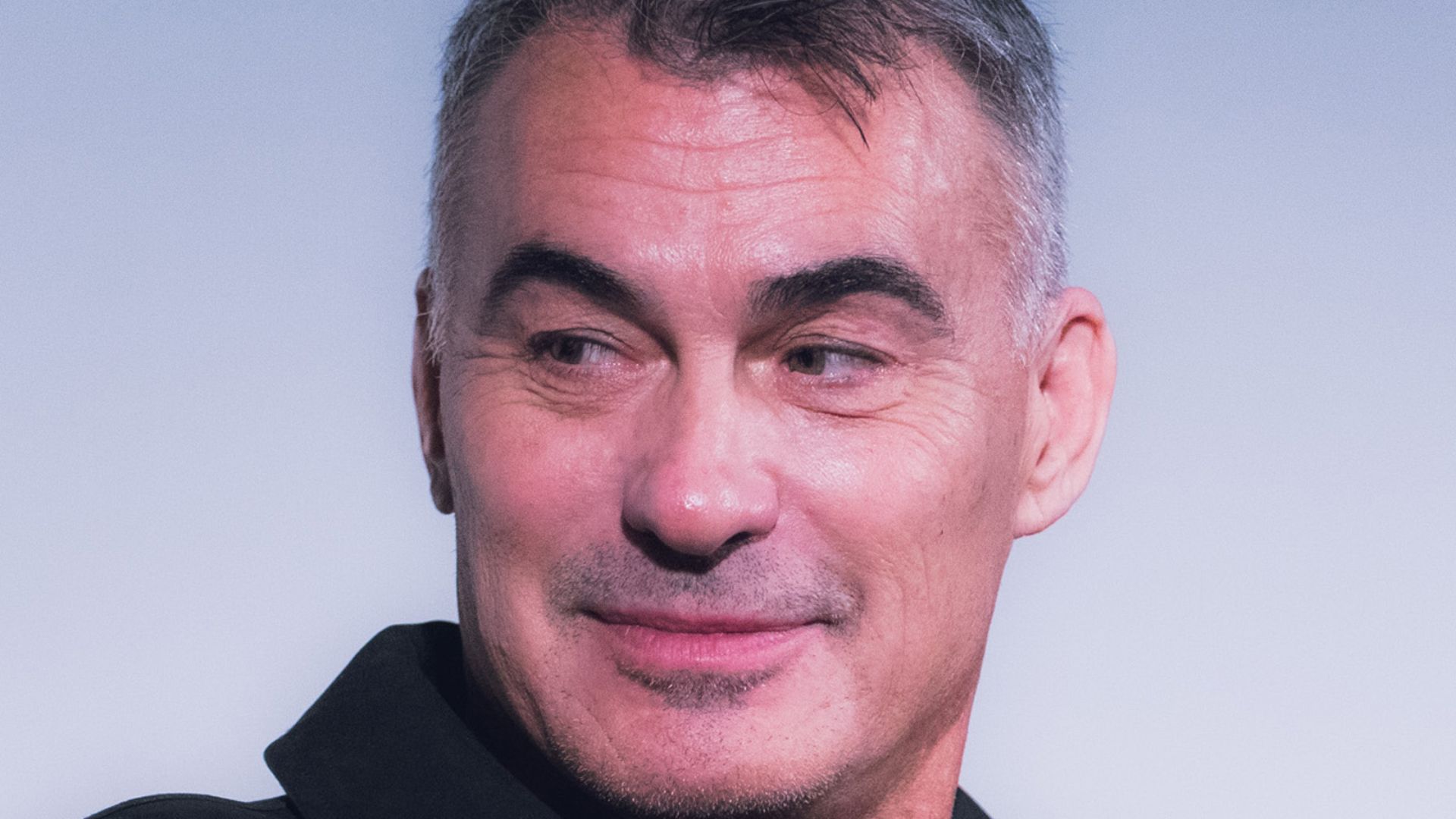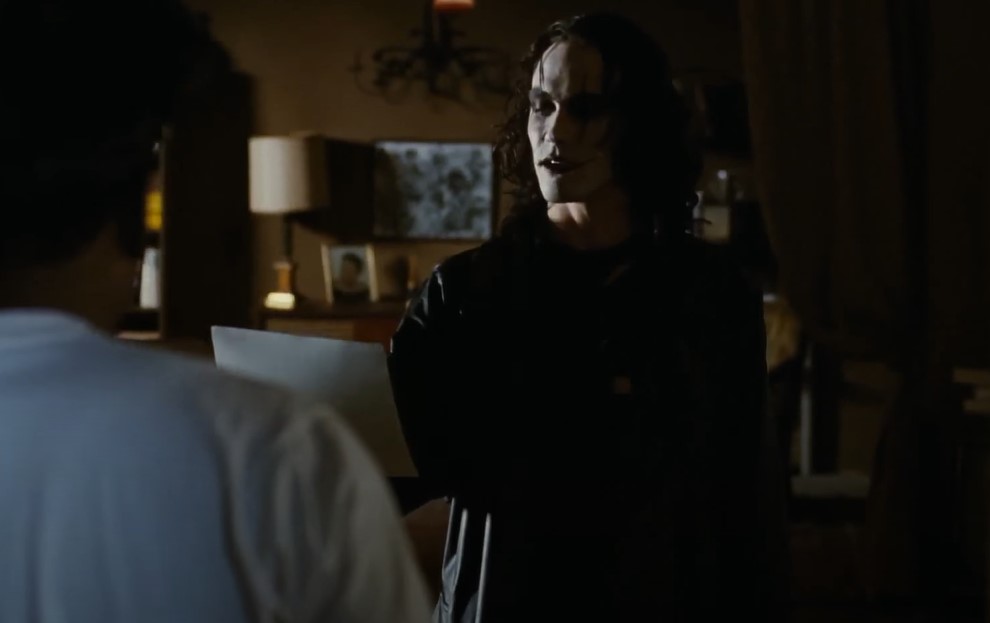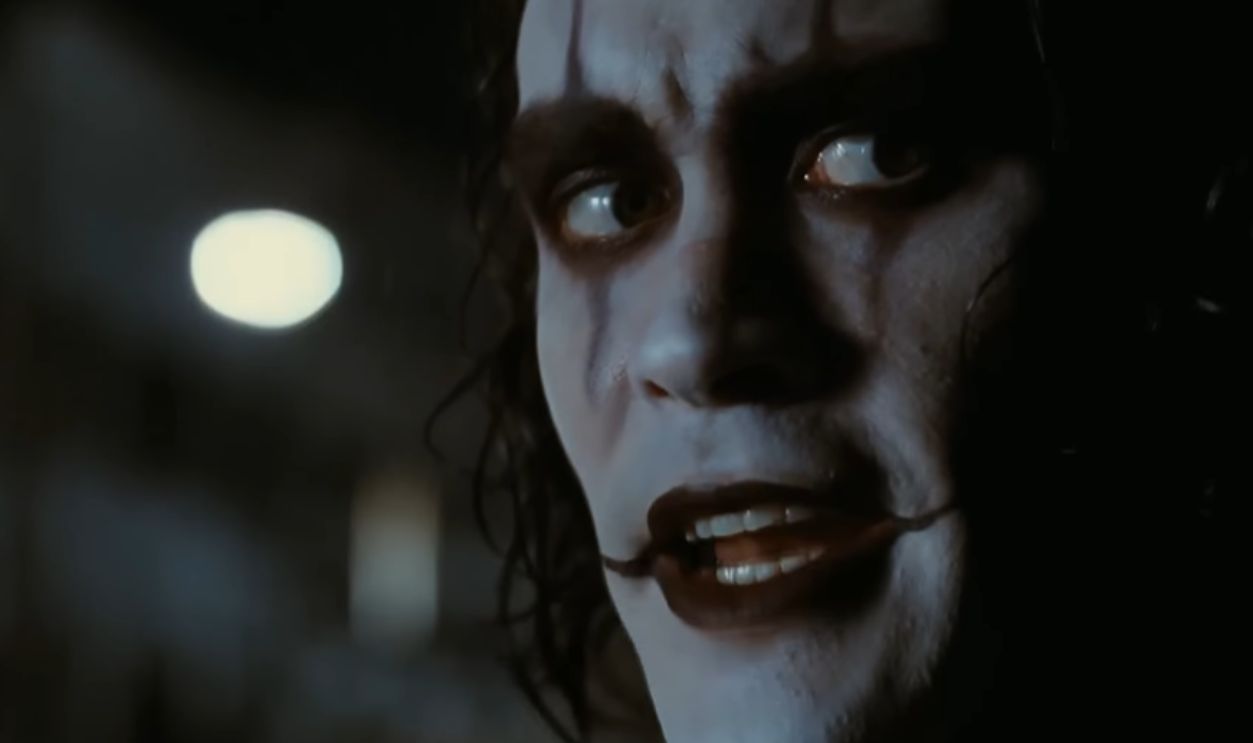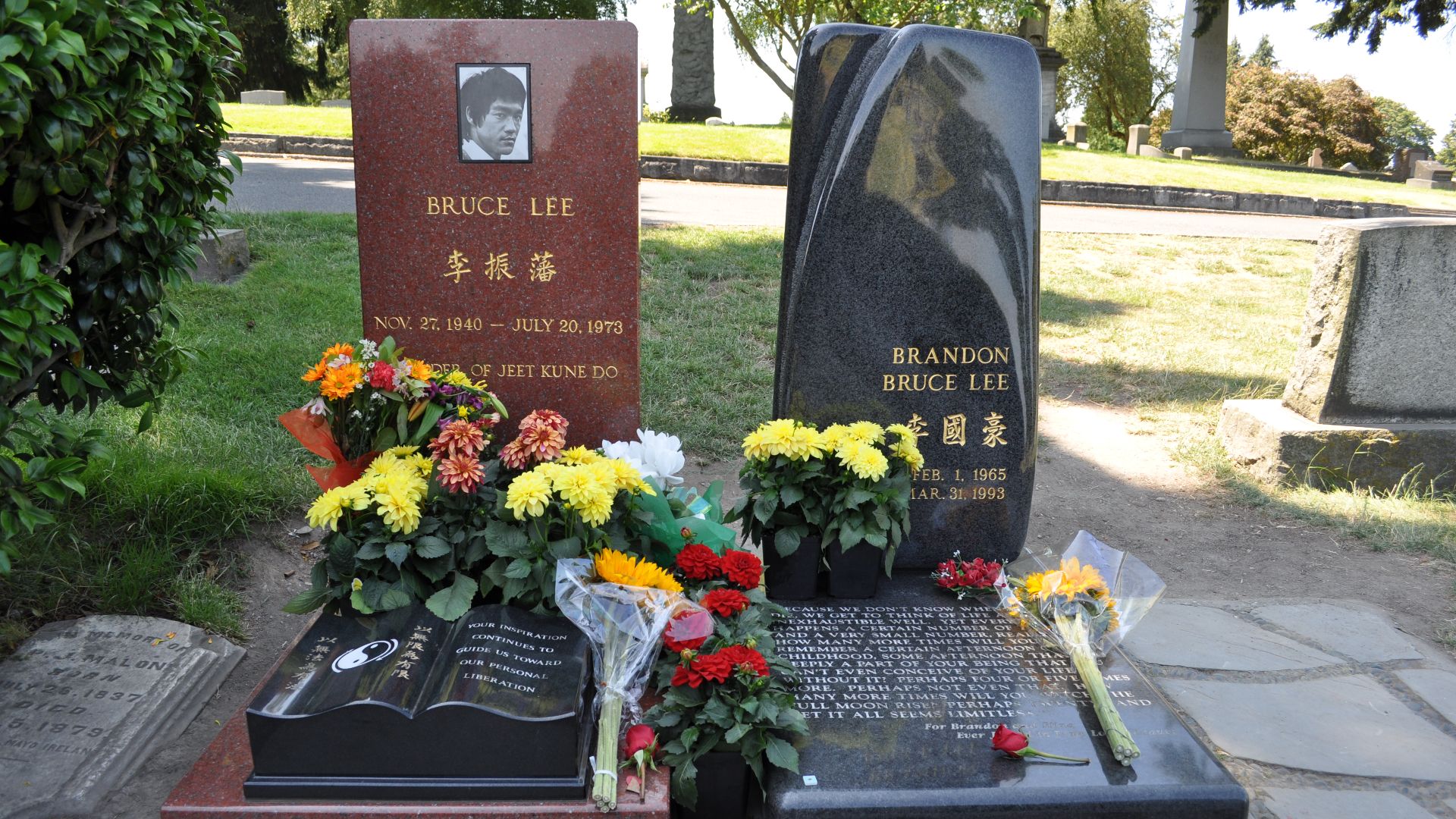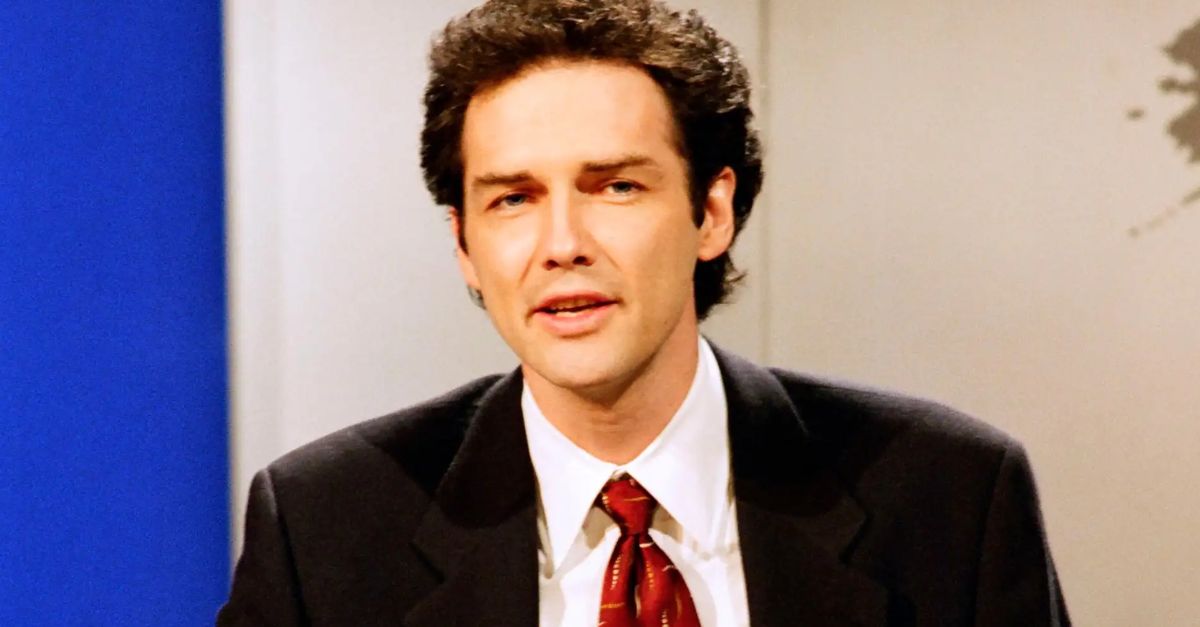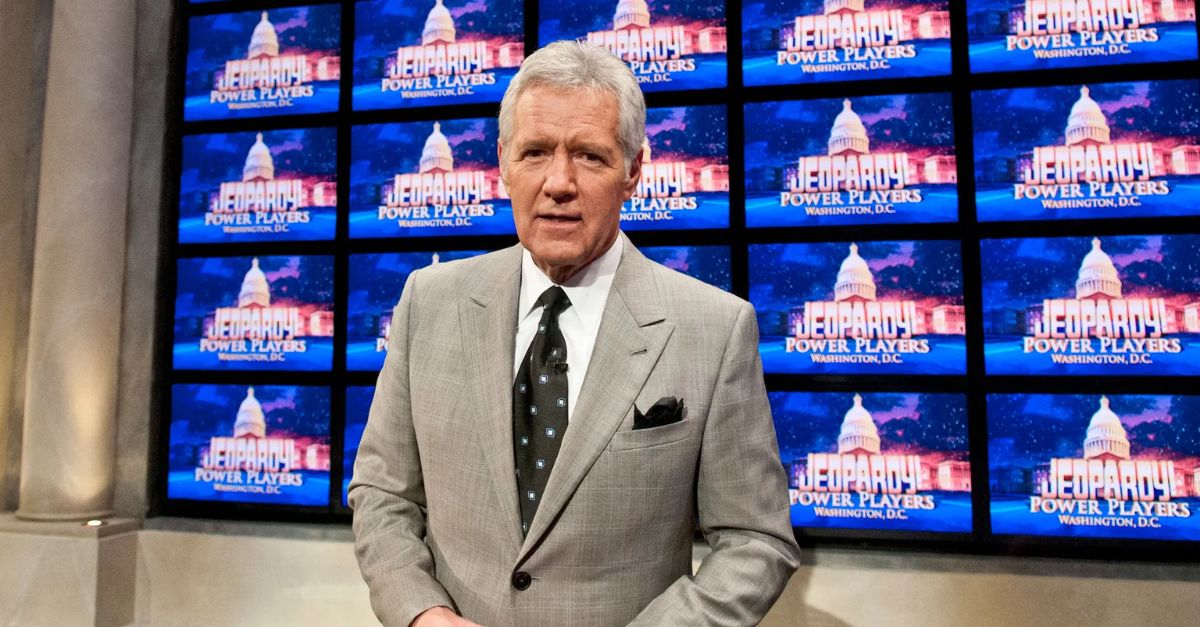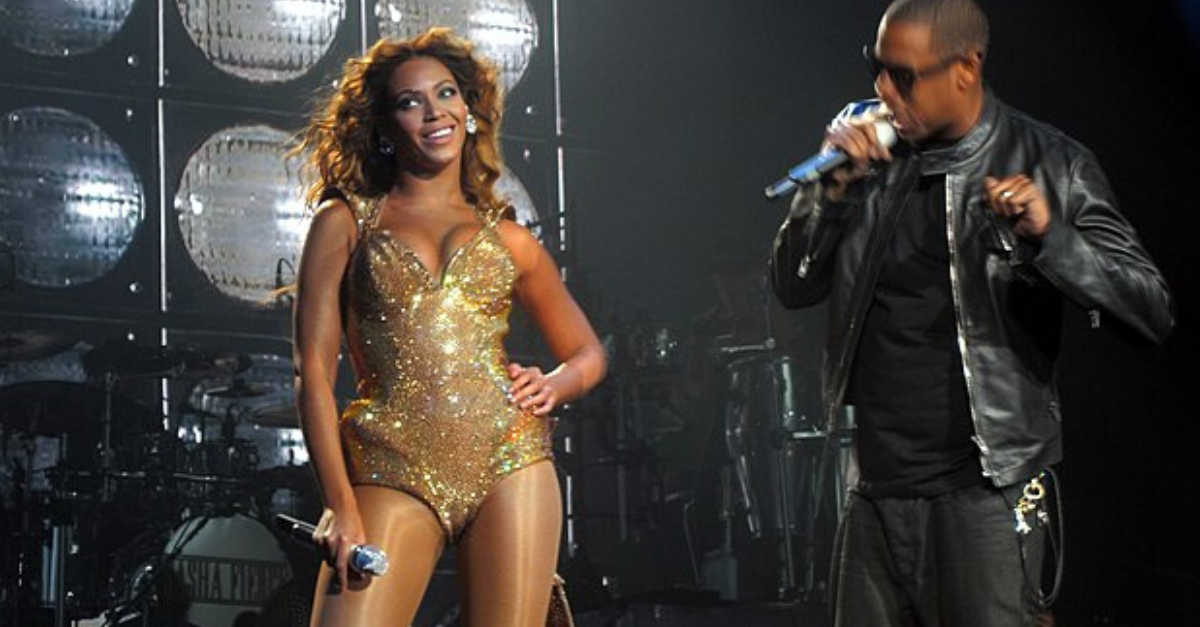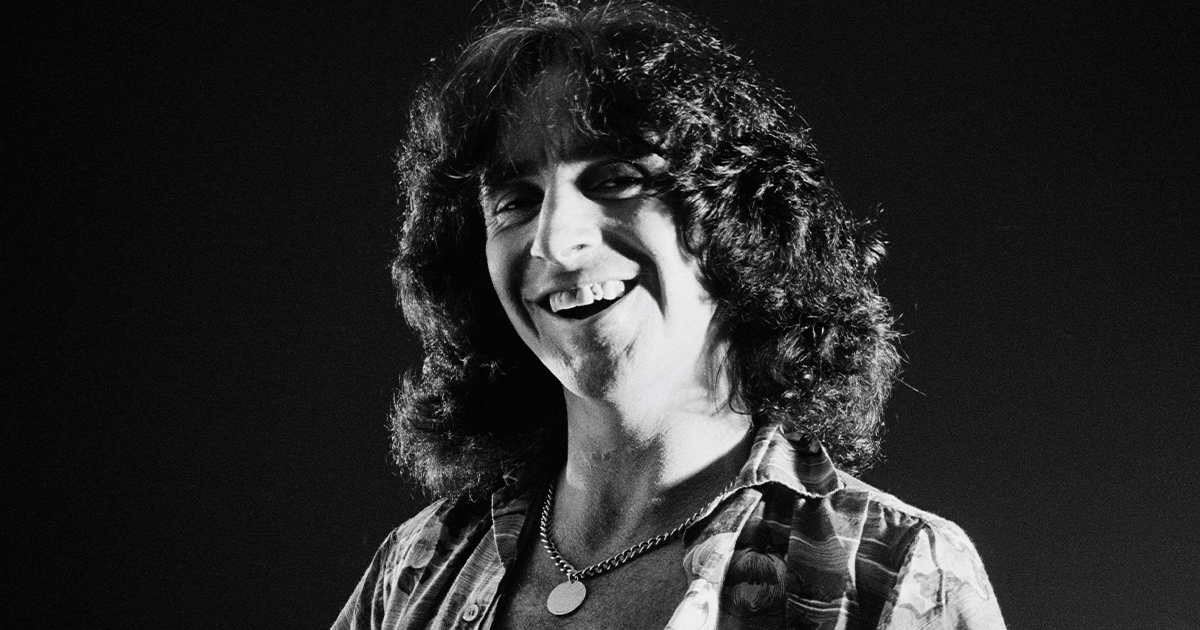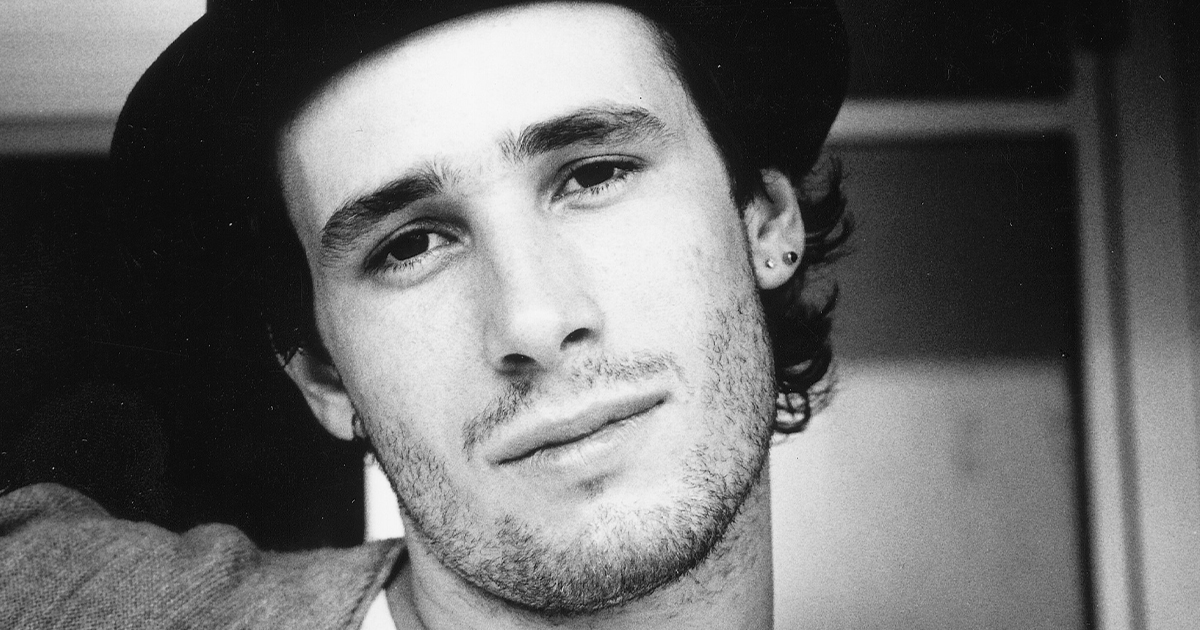Gone Too Soon
With only seven film credits to his name, Brandon Lee left an indelible mark on the industry, all without even scratching the surface of his full potential. As the son of an iconic actor and martial artist, Brandon had a difficult time forging his own path through Hollywood in the shadow of his father. In the end, however, he managed to build a legacy making movies he wanted to—until one incident changed everything.

1. He Was The Son Of A Legend
Part of what makes Brandon Lee’s story so tragic is that it’s easy to see how magnificent his life could have been, especially since he had greatness in his blood. Born on February 1, 1965, Brandon’s mother was Linda Lee Cadwell, while his father was the famed Hong Kong-American fighter and filmmaker, Bruce Lee. Born under the legacy of his father, Brandon endeavored to make a name for himself on his own merit.
Naturally, Bruce could see how special his son was from the moment he was born.
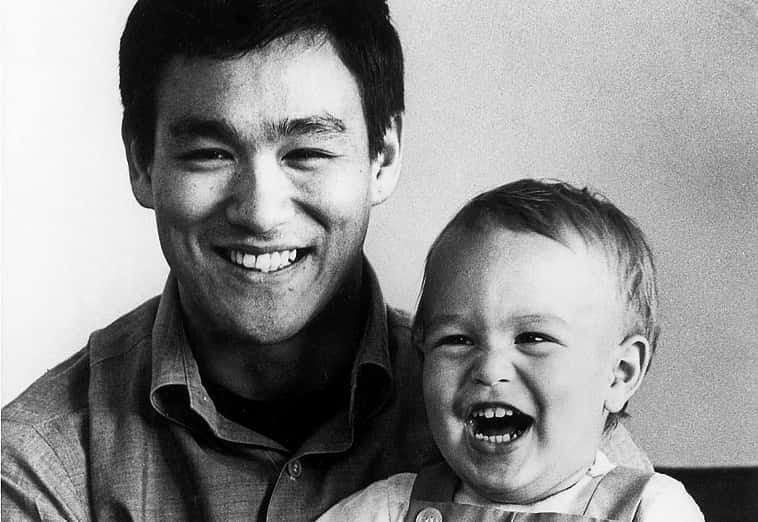 Unknown Author, Wikimedia Commons
Unknown Author, Wikimedia Commons
2. He Was A Proud Father
As Bruce Lee was already of mixed ancestry, and Linda Lee Cadwell came from a German and Swedish background, Brandon had quite a unique mix of traits. From the beginning, Bruce couldn’t have been happier, and he often bragged about how his son was—in his words—the only Chinese person with grey eyes and blond hair.
As famous as he was, Bruce tried his best to be a hands-on father.
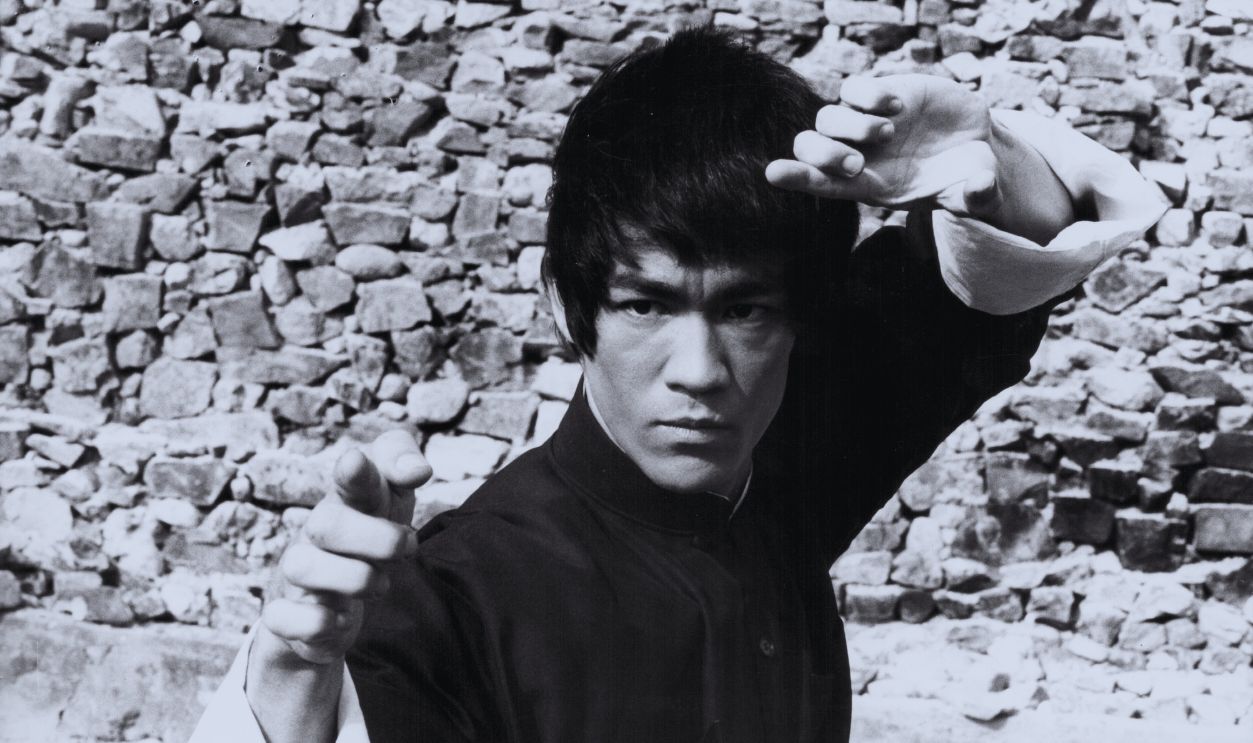 Stanley Bielecki Movie Collection, Getty Images
Stanley Bielecki Movie Collection, Getty Images
3. They Trained Together
Eager to pass his training on to his children, Bruce began teaching Brandon martial arts early on, and Brandon proved to be truly his father’s son. He took to the training like a fish to water and was eager to learn from his father, allegedly getting to a point where he could kick through an inch-thick board by the time he was five.
Meanwhile, martial arts wasn’t the only thing Brandon latched onto.
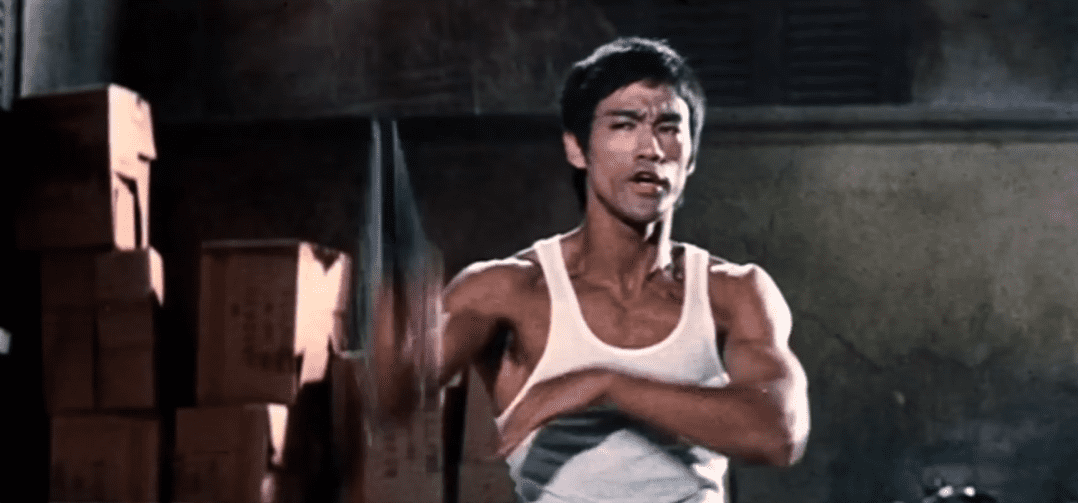 Game of Death ,Columbia Pictures
Game of Death ,Columbia Pictures
4. He Was Inspired By Him
As his father’s career grew with each film he created, Brandon and his family became increasingly busier, often splitting their time between America and Hong Kong. Still, Brandon got to see his father as much as possible while visiting him on set, and doing so spurred on Brandon’s own dream of acting.
Sadly, he would experience his first instance of grief far too soon.
 Obata family, Wikimedia Commons
Obata family, Wikimedia Commons
5. He Suffered A Loss
In a tragic turn of events, Bruce Lee perished on July 20, 1973, from cerebral edema, likely caused by a bad reaction to medication. The rest of the world had lost an icon whose legacy was instantly immortalized. However, Brandon, who was only eight at the time, simply lost a father whom he wished he could have known longer.
As Brandon grew older, he tried to keep up the training his father had started.
6. He Continued Training
In the wake of losing Bruce, Brandon and his family decided to live solely in California, but he didn’t want to lose the biggest thing he and his father had bonded over. So when he was nine, he resumed his training, but this time under another martial artist and actor, Dan Inosanto—who had once been a student of Bruce.
Unfortunately, even this became far too difficult for him.
7. He Couldn’t Carry On
Although Brandon wanted to continue his martial arts training at first, the effects of his father’s loss became too unbearable. His grief was especially affected by the dojos he would train at, since most of them celebrated Bruce’s life with large portraits on the walls. Unable to continue, he abandoned his training and chose to play soccer instead.
Understandably, the next several years were even more challenging.
8. He Was Troubled
Having experienced such a devastating loss at a young age, it’s no wonder that Brandon couldn’t stay out of trouble by the time he reached high school. In fact, his actions became so disruptive that in 1983, he was kicked out of his school, despite having only four days left before he graduated.
Fortunately, he didn’t let this turn him away from education forever.
9. He Went Back To School
Although troubled, Brandon hadn’t given up on learning entirely, and he achieved his GED the same year he left high school. Almost immediately, he relocated to New York City and attended the Lee Strasberg Theatre and Film Institute for acting, then Boston’s Emerson College, where he graduated with a major in theater.
Still maintaining his dream of acting, he was lucky enough to find a job in the business.
 Michael Ochs Archives, Getty Images
Michael Ochs Archives, Getty Images
10. He Got A Gig
After graduating from college, Brandon returned to California to find a job in the film industry, which fortunately didn’t take too long, as he got a job as a script reader in 1985. Even better, though, a casting director named Lynn Stalmaster offered him an audition for the TV movie, Kung Fu: The Movie, which he accepted and knocked out of the park.
At the same time, he wasn’t completely on board at first.
 Warner Bros. Television, Kung Fu: The Movie (1985)
Warner Bros. Television, Kung Fu: The Movie (1985)
11. He Was Hesitant
Kung Fu: The Movie was Brandon’s first chance at on-screen acting, and he even found a familiar face in Jeff Imada, a previous instructor of his who was in the film’s stunt department. However, he initially found the role too similar to what his father became known for, and it took some serious convincing for him to audition.
Even then, he couldn’t help but see another connection to his father.
 Warner Bros. Television, Kung Fu: The Movie (1985)
Warner Bros. Television, Kung Fu: The Movie (1985)
12. He Came Full Circle
While Brandon wanted to separate his career from his father’s as much as possible, he ended up strangely honoring his memory with Kung Fu: The Movie. The film was a follow-up to the series of the same name, and even Brandon eventually had to admit that his taking the role was only right, since the show was initially created with Bruce in mind.
Of course, he had many bigger opportunities on the horizon.
 Ron Galella, Ltd, Getty Images
Ron Galella, Ltd, Getty Images
13. He Made His Debut
Thankfully, Brandon didn’t have to wait long at all before someone gave him a chance at a lead role, since Kung Fu: The Movie wasn’t the only film of his released in 1986. Playing the main character in the Hong Kong action thriller Legacy of Rage, it was the first time Brandon received top billing on a project.
Meanwhile, it wasn’t the most pleasant filming experience.
 Golden Harvest, Legacy of Rage (1986)
Golden Harvest, Legacy of Rage (1986)
14. They Butted Heads
Although Legacy of Rage would be the only Hong Kong film that Brandon worked on, his performance was good enough to earn him a Hong Kong Award for Best New Performer. Still, behind the scenes, Brandon had earned that acclaim through a fair amount of frustration, as he and director Ronny Yu often clashed on set.
However, not all of Brandon’s early projects would be as successful.
 Golden Harvest, Legacy of Rage (1986)
Golden Harvest, Legacy of Rage (1986)
15. They Didn’t Like It As Much
Brandon hadn’t finished with the Kung Fu universe, and in 1987, he joined a spin-off series of the original show, Kung Fu: The Next Generation. The studio only created a pilot episode, which aired on CBS Summer Playhouse, and asked fans to vote on whether the series should continue or not. Regrettably, there wasn’t enough interest in the show, and it never made it past that episode.
Ultimately, Brandon wasn’t going to let anyone tell him what to do.
 Warner Bros. Television, Kung Fu: The Next Generation (1987)
Warner Bros. Television, Kung Fu: The Next Generation (1987)
16. They Told Him Not To
Brandon’s work in the 1980s continued, and he began to take more control of his career, even when that meant going against the advice of those around him. When he wanted the role of the villain in an episode of the series Ohara, others suggested he not go for it, as the character was the son of a Yakuza. Nonetheless, he took the role, seeing it as a welcome challenge.
At the same time, receptions of his films weren’t always so clear-cut.
17. He Had Mixed Reviews
Going into the 1990s, Brandon continued to find work in the action genre, but he wasn’t exactly pumping out blockbusters every year. At the start of the decade, he starred in the direct-to-video film Laser Mission, and although it became a hit on home video, the best praise that critics gave it was that it was a fun B-movie.
Finally, after years of avoidance, he decided to go back to his roots.
 Turner Home Entertainment, Laser Mission (1989)
Turner Home Entertainment, Laser Mission (1989)
18. He Started Training Again
Now that he had grown and come to accept the influence of his father’s legacy on his life, Brandon wanted to get back to learning martial arts. Returning to his old teacher, Dan Inosanto, he approached his training with a cinematic mindset, often filming his sessions to determine what might look good in a movie.
Around the same time, someone was eyeing him for a life-changing role.
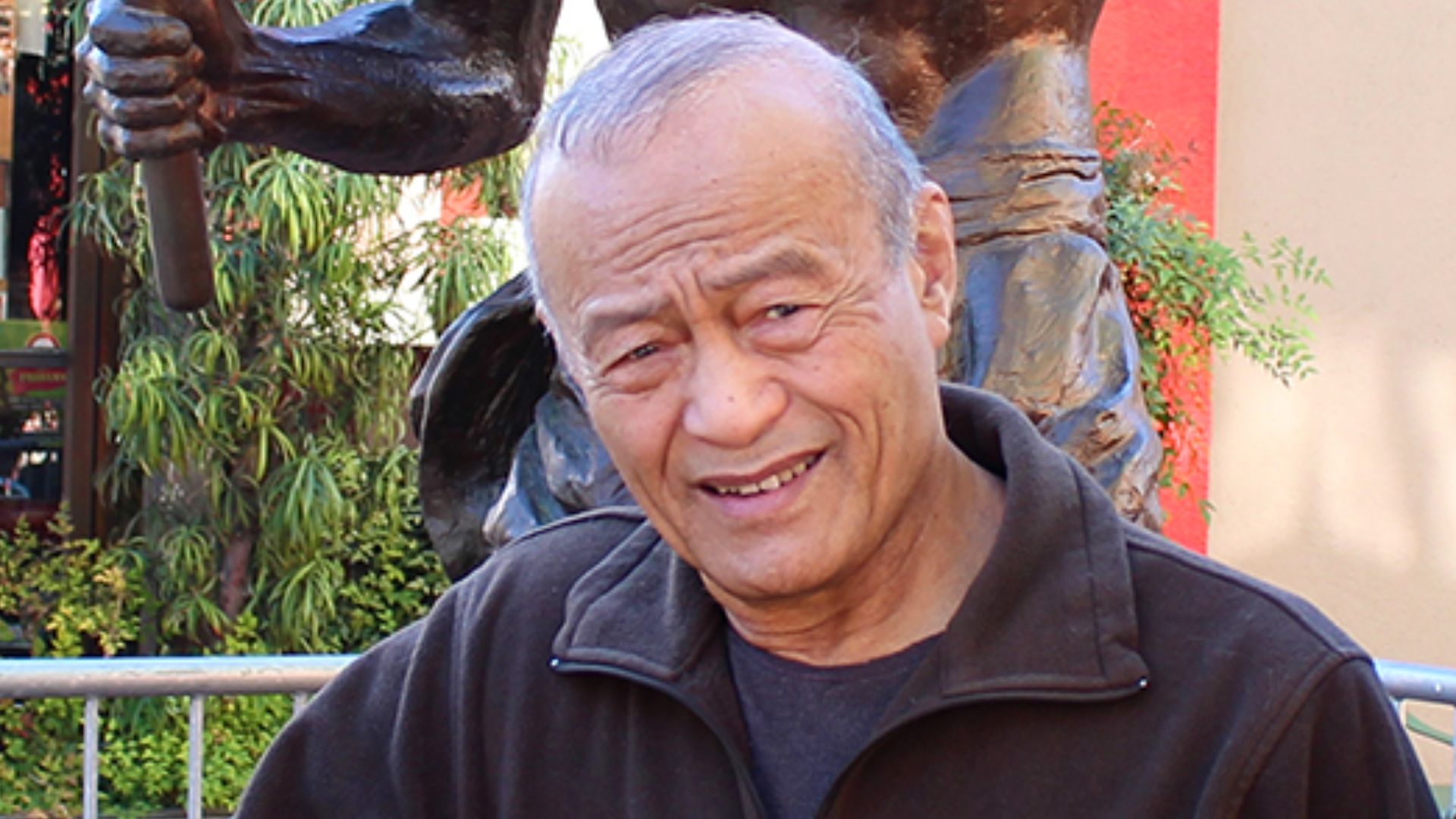 Salem Assli, Wikimedia Commons
Salem Assli, Wikimedia Commons
19. He Thought He Was Perfect
During this period, another amazing opportunity landed on Brandon’s doorstep when he received an invitation from none other than Marvel Comics. Meeting with the legendary comic book writer Stan Lee, and by proxy Marvel’s CEO, Brandon learned that they believed he had the potential to play the superhero Shang-Chi in a TV series or film.
Behind the scenes, though, he found something truly special.
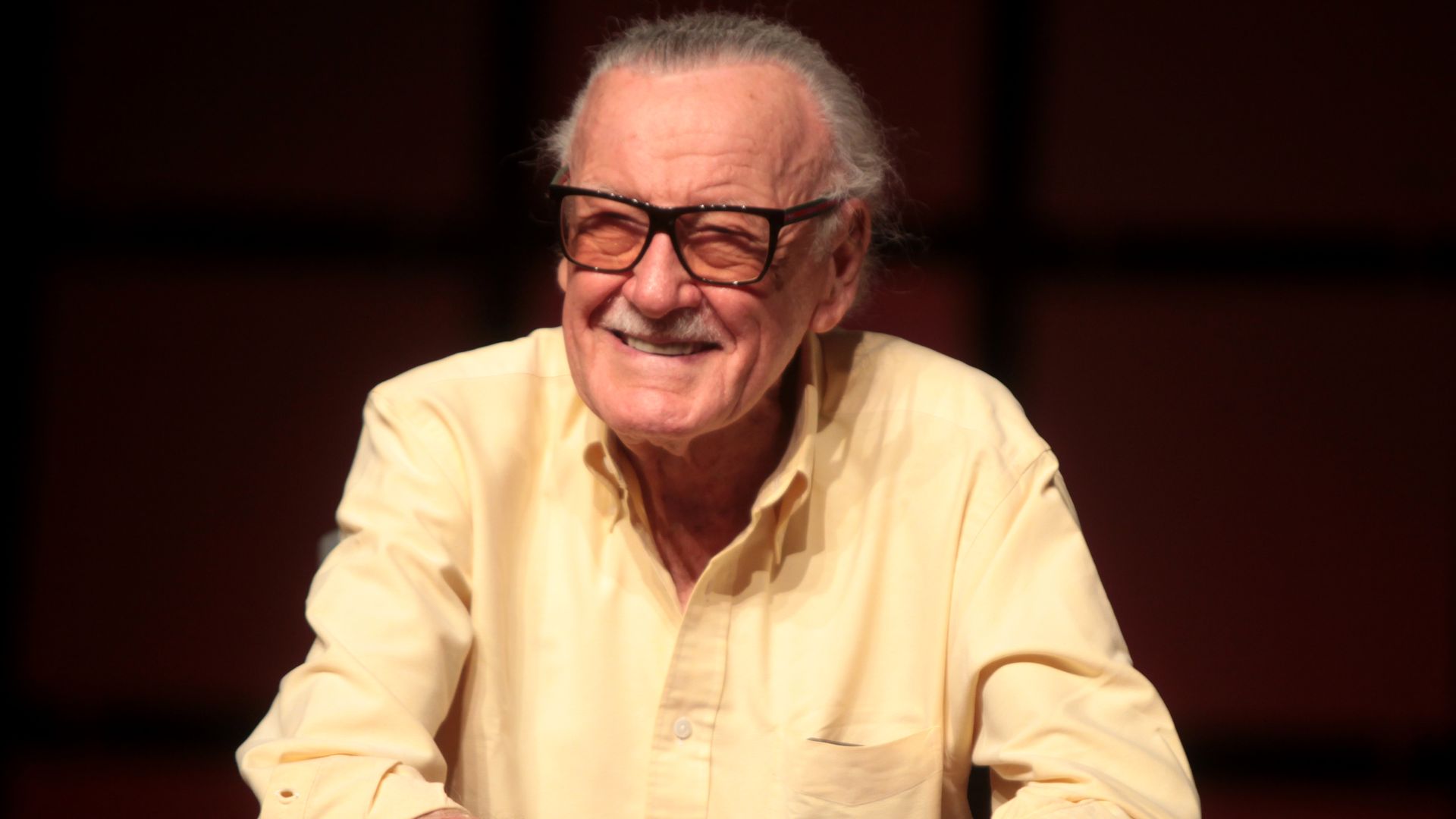 Gage Skidmore from Peoria, AZ, United States of America, Wikimedia Commons
Gage Skidmore from Peoria, AZ, United States of America, Wikimedia Commons
20. He Fell In Love
Brandon had one major romantic relationship in his life, and it all started in 1990 when he visited director Renny Harlin at his office. Harlin’s personal assistant was a woman named Eliza Hutton, and as soon as she and Brandon met, they felt an instant connection. By the following year, they had begun dating and had moved in together.
Still, there was one unique opportunity that Brandon refused.
21. He Turned It Down
Brandon may have been more accepting of his father’s legacy, but he still had his limits, which became clear when he received an offer to play Bruce in Dragon: The Bruce Lee Story. Thinking it would still be uncomfortable portraying his father, especially acting out his romance with his mother, Brandon ultimately declined the role in the biopic.
However, this didn’t mean he wanted nothing to do with it.
 Universal Pictures, Dragon: The Bruce Lee Story
Universal Pictures, Dragon: The Bruce Lee Story
22. He Helped His Performance
Instead of Brandon, the studio behind his father’s biopic cast an actor named Jason Scott Lee as Bruce, but even he was feeling the weight of the role. Jason would later state that he only got through his anxiety because Brandon had a heart-to-heart with him, urging him to view his father like the human he was instead of treating him like a god.
In his own career, though, Brandon was about to take a big step.
 Universal Pictures, Dragon: The Bruce Lee Story
Universal Pictures, Dragon: The Bruce Lee Story
23. He Appeared In America
Although Brandon had a few film credits, he had yet to make his debut in an American feature film, but this changed with the 1991 film Showdown in Little Tokyo. Starring alongside action icon Dolph Lundgren, Brandon appeared in his first major role for American audiences, even if the film had a mostly poor reception.
Luckily, other filmmakers in the US were starting to realize his talent.
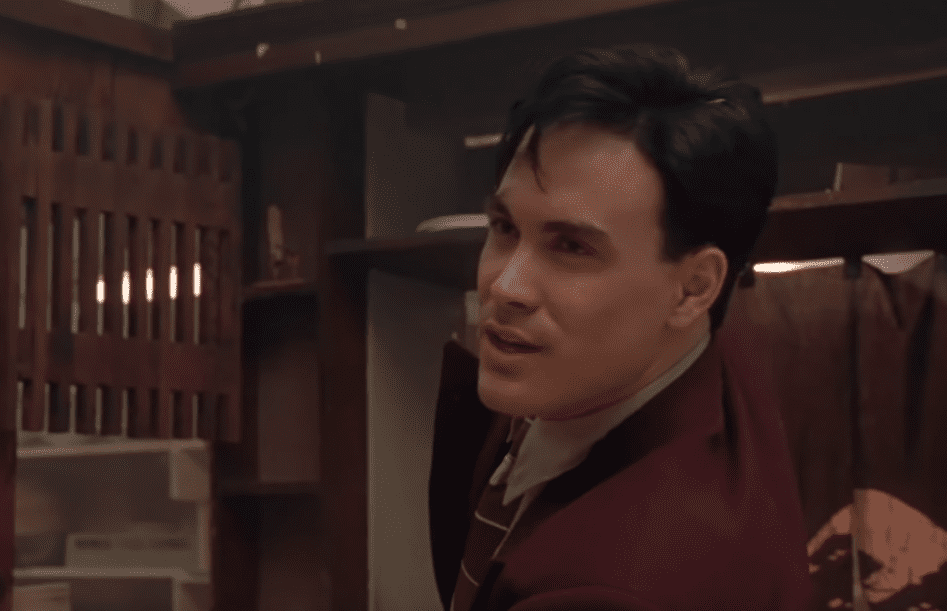 Showdown in Little Tokyo, Warner Bros
Showdown in Little Tokyo, Warner Bros
24. He Saw His Potential
In what would be Brandon’s second-last film in America, the 1992 film Rapid Fire featured him in the lead role and stood as an example of how his career was only getting better. He had secured the role through producer Robert Lawrence, who had seen Legacy of Rage and believed in Brandon’s prospects as a leading man.
Once again, Brandon felt like he could really empathize with his character.
 20th Century Fox, Rapid Fire (1992)
20th Century Fox, Rapid Fire (1992)
25. He Felt Connected To It
Clearly, the filmmakers trusted Brandon completely with this role, as they gave him a major say in putting together the film’s story. This was the right call, especially since Brandon felt a profound kinship with the role, as it was a character who had recently lost his father. Brandon even began bringing one of his father’s books to set so that he could get in the proper headspace for the character.
Fortunately for him, he was able to take even more control creatively.
 Ron Galella, Ltd, Getty Images
Ron Galella, Ltd, Getty Images
26. He Put Himself Into It
Brandon involved himself in as many facets of filmmaking as possible for Rapid Fire, being especially eager to participate in the writing and fight choreography. Working with Jeff Imada again as the stunt coordinator, Brandon incorporated some of his father’s martial arts style, Jeet Kune Do, and he even added some of his own comedy to the script.
As it happened, all of this hard work paid off.
 20th Century Fox, Rapid Fire (1992)
20th Century Fox, Rapid Fire (1992)
27. He Was Offered Contracts
Although Rapid Fire received poor reviews from the majority of critics, one positive aspect that most tended to agree on was Brandon’s performance, which many found charming. This praise seriously helped his growing career, and soon enough, the phone was ringing with bigger and better offers. Before the year was out, he had signed a multi-picture contract with Carolco Pictures and a three-picture deal with 20th Century Fox.
Even aside from all of that, he landed the most significant job of his life.
 20th Century Fox, Rapid Fire (1992)
20th Century Fox, Rapid Fire (1992)
28. He Booked His Biggest Role
Brandon was still doing publicity for Rapid Fire when he booked his next role, and this time it was his most exciting opportunity yet. Cast as the lead role in The Crow, Brandon delved into his preparation, which included immersing himself in the comic book the movie was adapting. By the time filming was underway, producer Jeff Most would applaud Brandon’s insight into the character.
Wanting to share his success, Brandon also took a familiar face with him.
29. He Brought In His Friend
Although he was still relatively new in Hollywood, Brandon was no stranger to action films and especially knew the importance of a strong stunt team behind the scenes. Therefore, he spoke to the filmmakers and convinced them to hire Jeff Imada as the stunt coordinator, knowing he would work well with him.
Just as before, Brandon also became heavily involved in the stuntwork.
30. They Added Something New
In The Crow, Brandon was playing Eric Draven, a man who comes back to life after he and his fiancée perish at the hands of a local gang. As an undead avenger, Brandon and Jeff Imada had to figure out what set the character apart, including the way he fought. To make his fighting style unique, they based a lot of it on aerobics, as well as including bits of Brandon’s personal martial arts style.
Likewise, his character had to have an equally distinctive look.
31. He Was Rock And Roll
Eric Draven may have technically been a vigilante, but he wasn’t a typical superhero, and Brandon knew exactly how to tackle his design. Basing his portrayal more on rock stars like the singer Chris Robinson, Brandon tried his best to steer clear of anything that would make him appear like a classic action hero. These efforts included undergoing an intense diet to make himself look smaller.
As filming began, it became clear just how dedicated Brandon was.
32. He Got Into His Character’s Head
Brandon didn’t just want to show up and read his lines; he wanted to inhabit the character of Eric Draven fully, and he went to extreme measures to immerse himself. One such method was to lie down surrounded by bags of ice, since the story had Eric Draven resurrected, and Brandon imagined that the experience would be that cold.
His commitment to the role didn’t stop there.
33. He Went All In
Brandon’s focus on the resurrection of his character nearly took him past his limits, as they shot the scene in question outside in the middle of winter. For Brandon’s part, as per the script, he filmed the scene without any clothes, which shocked everyone even more, as he still requested his bags of ice to prepare.
Naturally, the amount of himself that he gave to the role did not go unnoticed.
 Ron Galella, Ltd, Getty Images
Ron Galella, Ltd, Getty Images
34. They Were All Impressed
Brandon clearly took method acting to a whole new level, and although it put his health at risk, his attitude constantly inspired those around him. People like key hairstylist Michelle Johnson later stated that he would douse himself with water before any rain scenes to make it more real, and that the crew had only amazing things to say about his truly dedicated work.
At the time, Brandon still had to film one of his most important scenes.
 Ron Galella, Ltd, Getty Images
Ron Galella, Ltd, Getty Images
35. He Was On Set
Although it was a difficult project, Brandon was clearly having a blast making The Crow—until one terrible day. While filming the scene of his character’s demise on March 31, 1993, Brandon was preparing for actor Michael Massee to fire at him with a revolver, which still had dummy rounds inside from a previous scene.
Before filming, however, they made a change.
36. They Weren’t Real
The dummy rounds used in a previous scene were actually real live rounds that the special effects team had removed the powder charges from. However, it would have been unsafe to use them when the revolver was fired at Brandon, so they replaced the dummy rounds with blanks.
Nonetheless, all it took was one mistake for something to go horribly wrong.
37. They Didn’t Check It Properly
The scene went forward as scripted, with Michael Massee firing what he believed was only a blank at Brandon, but the special effects team had overlooked an issue. They should have cleaned and examined the revolver before the scene, and since they didn’t, no one realized that a small, broken piece of a dummy round was still stuck in one of the chambers.
While unclear at first, it wasn’t long before they knew something was wrong.
38. He Fell The Wrong Way
As the script dictated, the revolver was meant to fire and cue Brandon to collapse face down, so when he instead fell backwards, everyone stopped. Director Alex Proyas yelled “cut,” and everyone prepared to start the scene again, but Brandon remained on the ground. Being who he was, everyone thought that he was either still in character or playing a joke.
The truth, however, was far more tragic.
39. He Wasn’t Waking Up
Although others in the cast and crew believed it might have been some sort of trick, Brandon’s long-time friend, Jeff Imada, thought otherwise. Almost instantly, he rushed to the actor’s side to make sure he was okay, but he noticed that while his breathing was heavy, Brandon had fallen unconscious.
Even then, they didn’t realize the extent of his injury.
40. He Thought He Was Fine
When the piece of dummy round fired at Brandon, it pierced his abdomen and lodged itself close to his spine, but it didn’t look like this had happened initially. When the set medic showed up, he didn’t see any bleeding, so he thought that Brandon had only hit his head when he fell. He even checked Brandon’s pulse, which was normal at first, but slowed down and stopped within a matter of minutes.
Unfortunately, it was already too late to save him.
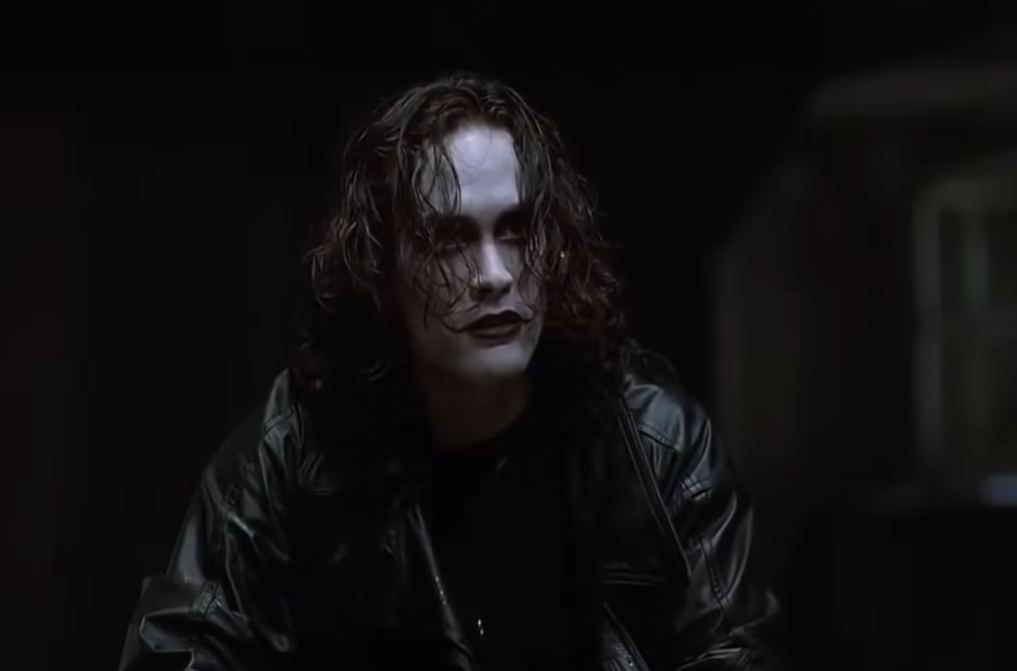 Crowvision Inc., The Crow (1994)
Crowvision Inc., The Crow (1994)
41. They Couldn’t Help Him
Whether they fully realized what had happened yet or not, it was clear that Brandon’s life was in danger, so paramedics brought him to the hospital. The doctors determined the problem and attempted to treat him, performing emergency surgery for over six hours. In the end, though, they couldn’t do it, and he perished at 28 years old.
Still, many took this opportunity to turn this incident into a conspiracy.
42. They Called It An Accident
When Brandon’s father passed, although the authorities confirmed the cause, several other theories emerged that someone had orchestrated his demise. Sadly, despite Brandon’s incident receiving the ruling of “an accident due to negligence,” he fell victim to the same type of speculations.
After everything, one other detail makes his loss all the more tragic.
 Michael Ochs Archives, Getty Images
Michael Ochs Archives, Getty Images
43. They Had Big Plans
Brandon was so young when he passed, and although his father had already married and had one child by that age, Brandon had done neither. In a devastating twist, though, he had proposed to Eliza the year before, and if things hadn’t happened as they did, the two would have married a week after filming was to wrap on The Crow.
Of course, Eliza was far from the only one grieving Brandon’s loss.
 Ron Galella, Ltd, Getty Images
Ron Galella, Ltd, Getty Images
44. She Took Them To Court
The cause of the incident came down to poor safety on the part of the filmmakers, and although they received no charges against them, they weren’t totally off the hook. Brandon’s mother, Linda Lee Cadwell, wanted justice for her late son and filed a lawsuit in which she cited carelessness. While the full details are unknown, the filmmakers settled after a couple of months.
At the same time, she didn’t want Brandon’s final work to remain unfinished.
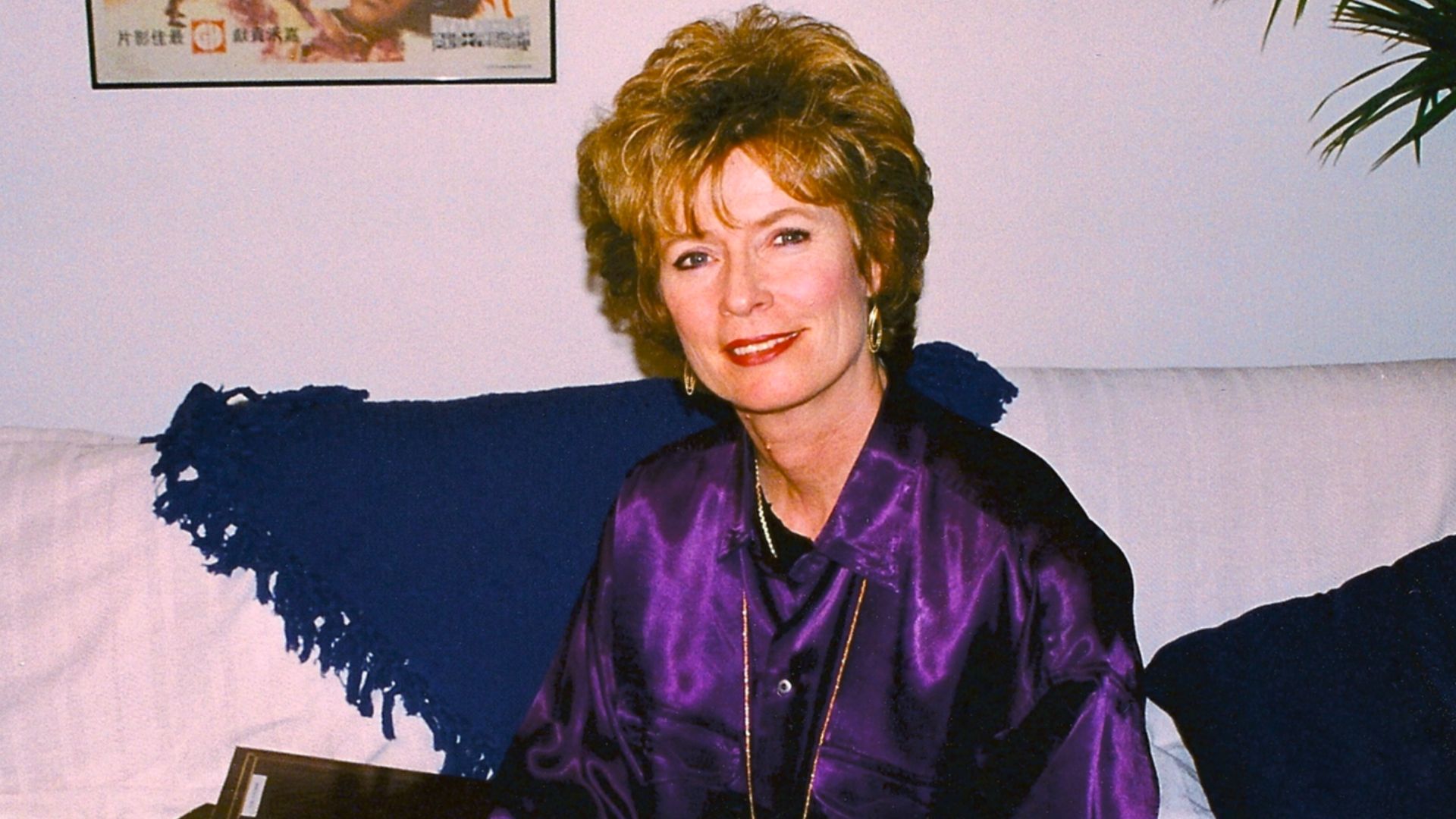 Steve Durgin from Los Angeles, USA, Wikimedia Commons
Steve Durgin from Los Angeles, USA, Wikimedia Commons
45. They Gave Their Blessing
Not only had director Alex Proyas lost a good friend, but this also put him in an unimaginably difficult position. Some may say it would have been better to scrap the movie entirely without its lead actor, but Brandon had already devoted himself to making The Crow and was only eight days away from finishing the project. Fortunately, Proyas’ decision became easier when both Linda Lee Cadwell and Eliza vocalized their support for completing the film.
This would be far easier said than done, though.
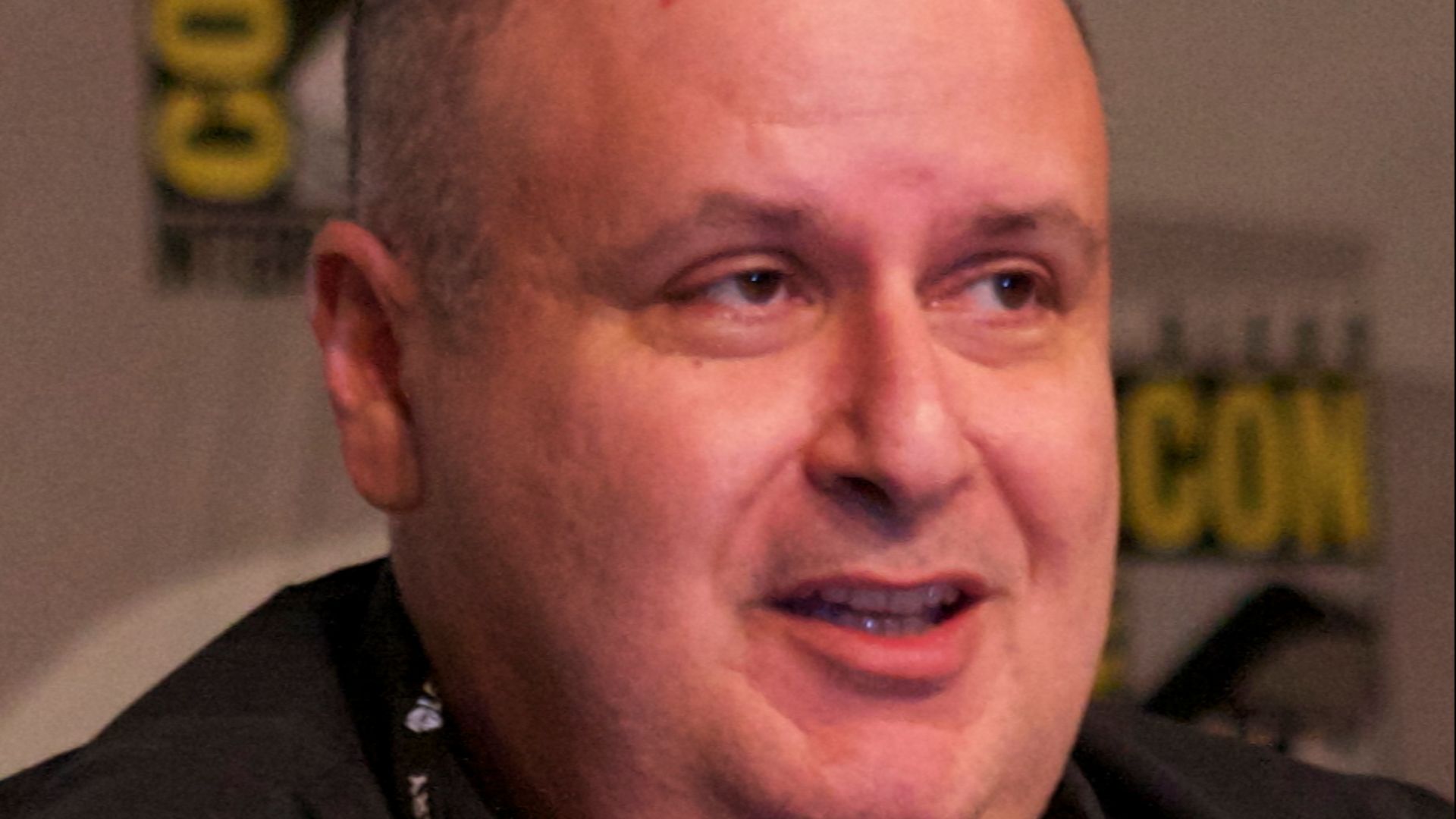 Count3D from Vancouver, Canada, Wikimedia Commons
Count3D from Vancouver, Canada, Wikimedia Commons
46. They Stood In For Him
While there were eight days of production remaining, Brandon actually only had three days left of filming for his scenes, which made completing the movie much easier. To make up for his absence, two stuntmen performed the scenes with Brandon’s face placed over theirs, using special effects. This was one of the first instances of filmmakers using the likeness of an actor who had already passed.
Beyond the logistics, most believed this was the only way to go.
47. He Believed It Was Right
One of the stuntmen who stood in for Brandon was Chad Stahelski, who has gained more recent fame for creating the John Wick film franchise. During an interview in 2019, he reflected on finishing The Crow in the wake of Brandon’s passing, and said he was adamant that “Brandon would have wanted the thing done”.
Thankfully, through all the pain and heartache, they made something beautiful.
48. It Was A Massive Hit
Brandon’s tragically brief career had its fair share of ups and downs, and he wasn’t unfamiliar with a movie doing poorly, but thankfully, that wasn’t the case here. Proyas finished The Crow, and when it was released in 1994, it grossed over $50 million in earnings and opened at number one in America, becoming Brandon’s most successful film.
Not to mention that, although he’s gone, Brandon will be forever tied to the film.
49. He Never Went Away
Amid the endless applause of audiences and critics, some pointed out that the circumstances surrounding The Crow’s production added a unique and enduring quality to it. The film already had its own brand of melancholy, but as one critic stated when explaining the effect of Brandon’s passing, “That specter will always hang over The Crow”.
Some have even put forward that he rose above another’s legacy.
50. He Became An Icon On His Own
After losing his father, Brandon Lee spent years trying to run from the immense legacy left behind, wanting to find his own way. Even after Brandon accepted his father’s impact, he tragically wouldn’t live to see his career reach its full potential, but The Crow still offers a bittersweet consolation. Many critics have referred to the film as the perfect epitaph for him, while Roger Ebert went so far as to say it was even better than any of Bruce Lee’s movies.
You May Also Like:
Bruce Lee Took A Scandalous Secret To His Grave
Behind The Scenes Of The World’s Best Kung Fu Movies

